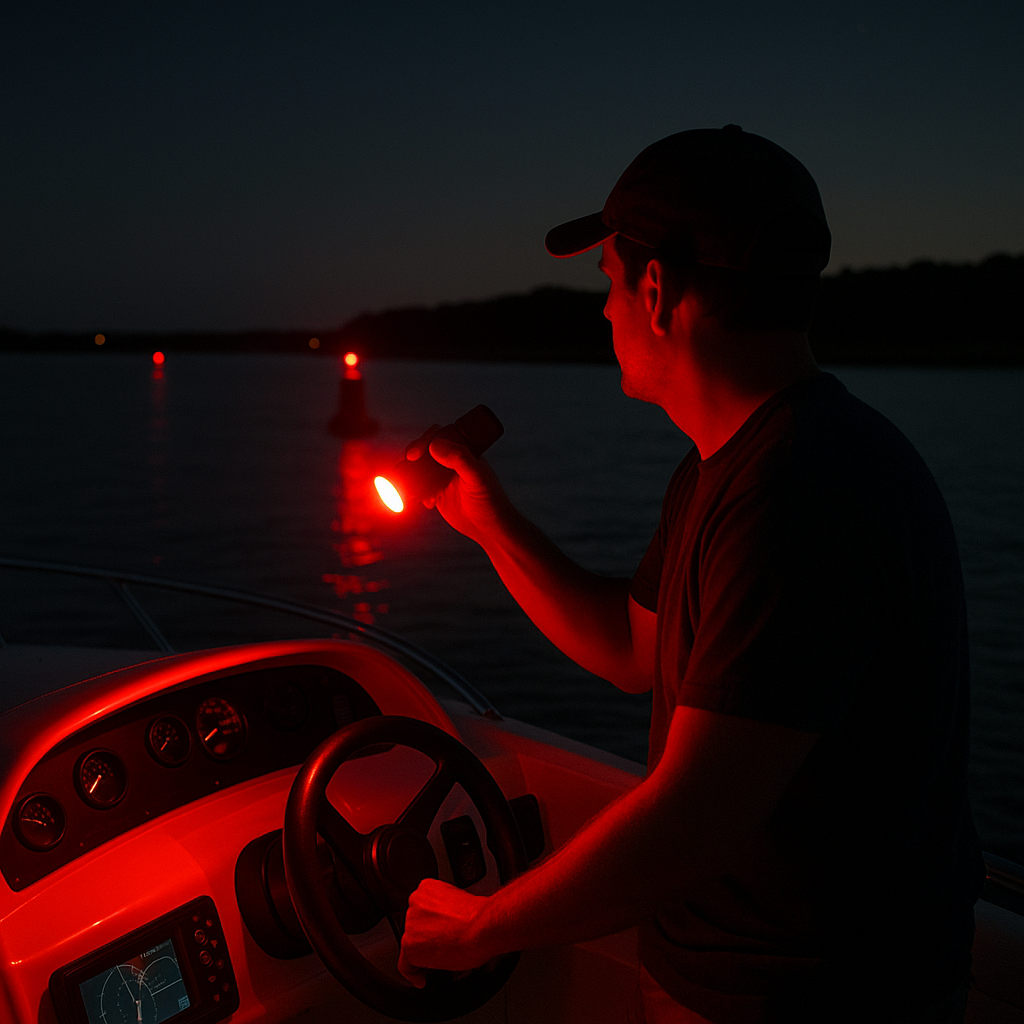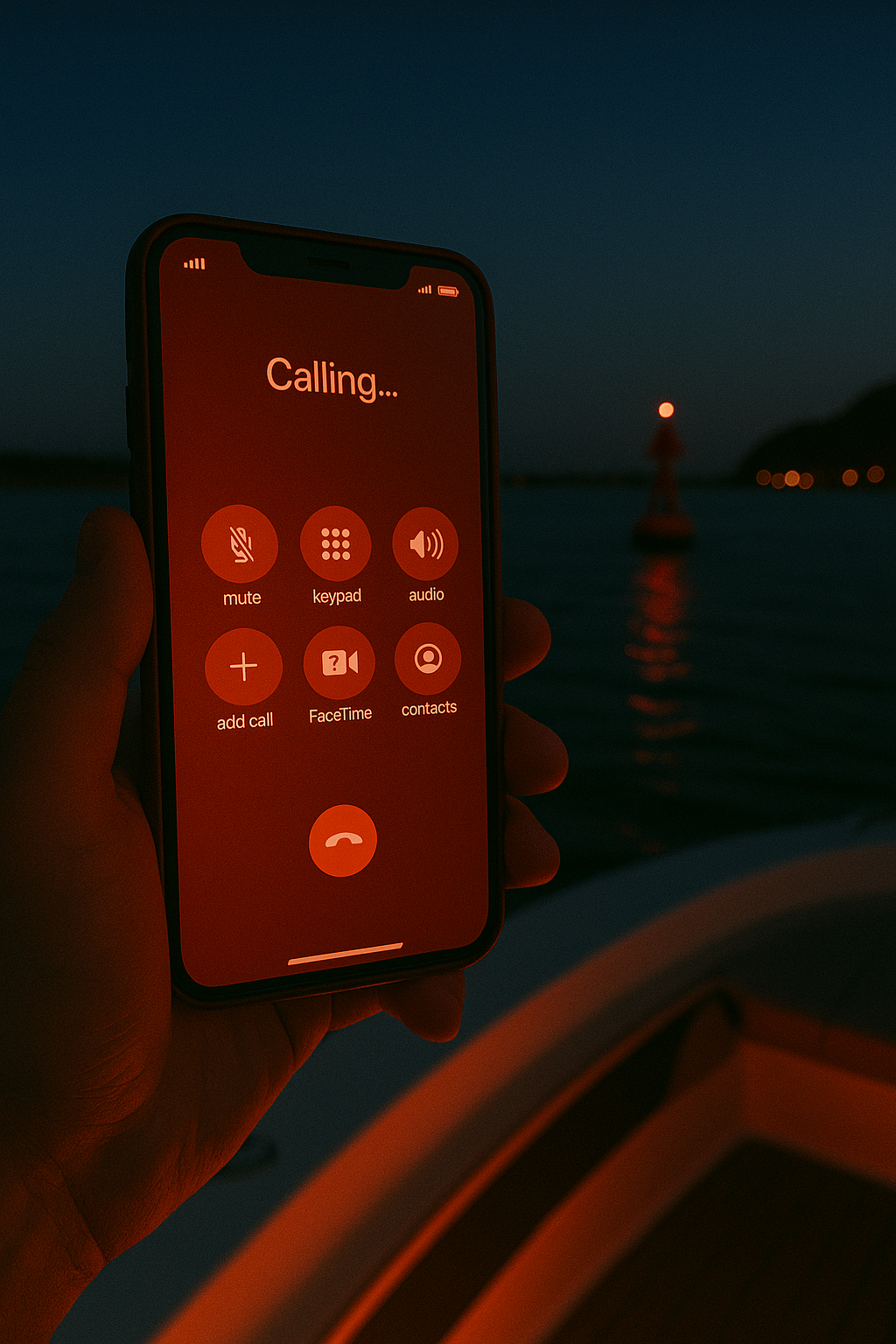Boating at Night: Protecting Your Night Vision for a Safer Journey
Boating at night can be a breathtaking experience—calm waters, quiet surroundings, and a sky full of stars. But it also comes with serious risks. Boating after dark is inherently more challenging and dangerous, even for experienced boaters. Depth perception is reduced, hazards are harder to spot, and the margin for error is much smaller.
That's why it's critical to approach night operations with caution, preparation, and common sense. A key part of safe night boating—often overlooked—is protecting your night vision.

Why Night Vision Matters on the Water
Your eyes are incredibly adaptable. Given enough time and the right conditions, they can adjust to the dark and allow you to see surprising levels of detail in low light. This natural night vision becomes one of your best tools for spotting buoys, other boats, shoreline features, and hazards on the water.
But here's the catch: it only takes one blast of bright white light to destroy your night vision. Recovery can take up to 30 minutes. That's a long time to be effectively blind on the water.
Use Red Lights or Night-Vision-Friendly Alternatives
If you need light onboard after dark—whether it's to check a chart, move around the deck, or adjust gear—red light is your best friend. Red light allows you to see without compromising your night vision. Many flashlights and headlamps come with a red LED mode for this very reason.
Other night-friendly options include amber or green LED lights, but red remains the gold standard. If your vessel doesn't have red cockpit or cabin lighting, consider installing some or carrying a few red-light flashlights with you.
Spotting Flashlights: Aim Above the Horizon
Bright flashlights still have a place at night—especially for spotting markers or checking distant objects. But they must be used carefully. Pointing a flashlight directly at the water can cause intense reflection and glare, which will dull your night vision. Instead, aim the beam just above the horizon to reduce reflection and maintain visibility.
Designate a Night Vision Guardian
If possible, assign one crew member—ideally the person at the helm—to be the designated night vision preserver. This person should avoid all bright lights, screens, and distractions to maintain optimal night vision. They'll be your most reliable set of eyes as your vessel navigates in low-light conditions.
Phones: Silent Night Vision Killers

One of the fastest ways to ruin your night vision is by checking your phone. Most screens are extremely bright, even when dimmed. Before heading out, take a minute to adjust your phone settings:
-
Switch on a night mode or dark mode
-
Reduce the brightness manually
-
Enable a red filter or color tint (found in accessibility settings on most phones)
This small step can make a big difference once you're on the water.
Chart Plotters and Electronics Have Night Modes Too
Most modern chart plotters and marine electronics include a night mode that shifts the screen to darker tones and reduces brightness. Make sure you know how to enable it before you're underway. It's a good idea to practice finding this setting in daylight, so you're not fumbling with menus in the dark.
Leaving the Dock: A Critical Moment
When leaving the dock at night, your eyes may not yet be adjusted to the darkness—meaning your night vision is minimal or non-existent. This is one of the riskiest phases of your trip. Move cautiously, use the lowest effective lighting, and give your eyes time to adapt.
Night Vision Doesn't Replace Navigation Lights
Preserving your night vision does not mean turning off your navigation or motoring lights. These are critical for safety and legally required when underway. Always ensure your boat is properly lit to stay visible to others, even if it means your night vision takes a slight hit. Safety and visibility come first.
Final Thoughts
Boating at night is not for everyone. It requires good preparation, sound judgment, and the ability to stay calm in low-visibility conditions. Your best tools on the water—your eyes—need time and protection to work effectively after dark.
Always use common sense: if visibility is poor, if you're unfamiliar with the waters, or if your gear or crew isn't up to the challenge, don't go out. There's no shame in waiting for daylight—only smart seamanship.
Night boating can be magical, but it's not something to take lightly. Respect the risks, respect the conditions, and stay safe.
Before You Go: Night Boating Common Sense Checklist ✅
-
Know the waters – Avoid unfamiliar areas at night.
-
Check your nav lights – Ensure they're working and legal.
-
Assign a night vision guardian – Usually the helmsman.
-
Use red lights only – For reading or moving around the boat.
-
Prepare your phone – Enable night mode or red screen filter.
-
Set chart plotters to night mode – Before leaving the dock.
-
Keep flashlights aimed above the waterline – Avoid glare.
-
Move slowly when leaving – Night vision won't be ready yet.
-
Carry backups – Extra lights, batteries, and charts.
-
Trust your gut – If it doesn't feel right, wait for daylight.
